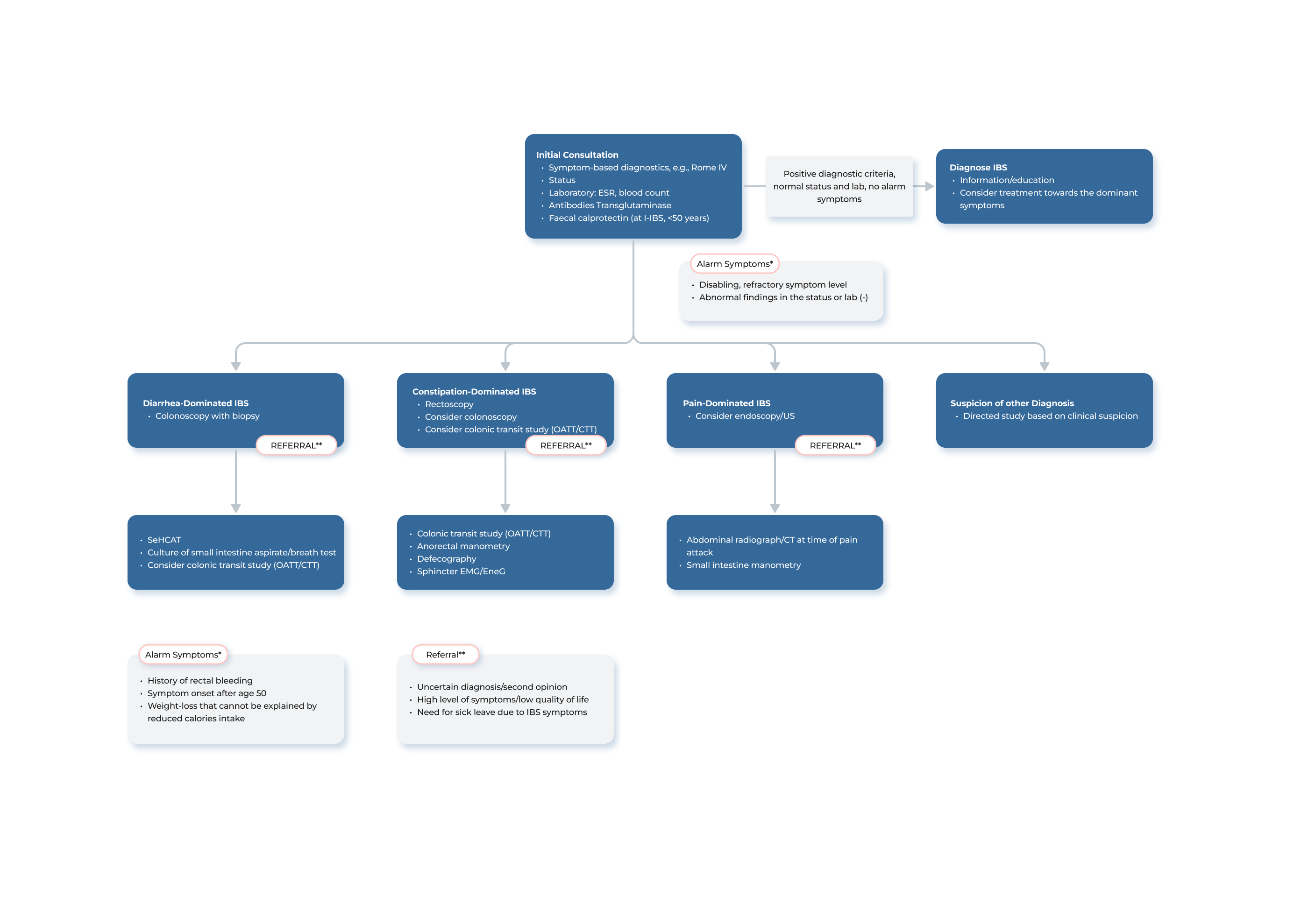Colonic Transit Time (CTT) in Children and Adolescents: Reference Values
Colonic Transit Time (CTT) values are not normally distributed. Therefore, percentile 95 is often used for upper reference values.
Two studies on totally 76 healthy subjects, 3-18 years, have been performed with the Abrahamsson method (Transit-Pellets method) presenting percentile 95-values (Wagener et al 2004; Vande Velde et al 2013). In both studies the highest CTT value observed was 3.6 days (36 markers, 86.4 hours). In the Wagener study on 22 patient’s, percentile 95 was 3.5 days while in the Vande Velde study on 54 patients the percentile 95 was 3.3 days.
Rintala et al (1997) studied 25 healthy children with the same method. The highest CTT value observed was 3.4 days while percentile 95 was not reported.
For calculation of segmental transit times with the Transit-Pellets method four colonic sub-segments, cecum-ascending colon, transverse colon, descending colon and sigmoid colon-rectum, are usually considered, as done by Wagener et al.
Based on these reports a provisional upper reference value for CTT (percentile 95) of about 3.3 days (approximately 80 hours) in children and adolescents seems reasonable until further studies are conducted on larger groups.
Rintala, R.J., Marttinen, E., Virkola, K., et al (1997). Segmental Colonic Motility in Patients With Anorectal Malformations. Journal of Pediatric Surgery, Vol. 32, No. 3, 453-456.
Vande Velde, S., Notebaert, A., Meersschaut, V., et al (2013). Colon transit time in healthy children and adolescent. Int J Colorectal Dis., Vol. 28, 1721-1724.
Wagener, S., Shankar, R.R., Turnock, G.L., et al., (2004). Colonic Transit Time – What Is Normal? J Pediatr Surg., Vol. 39, 166-169.
 Clinical Instructions for Use
Clinical Instructions for Use Clinical Instructions for Use
Clinical Instructions for Use



